19-March-2024
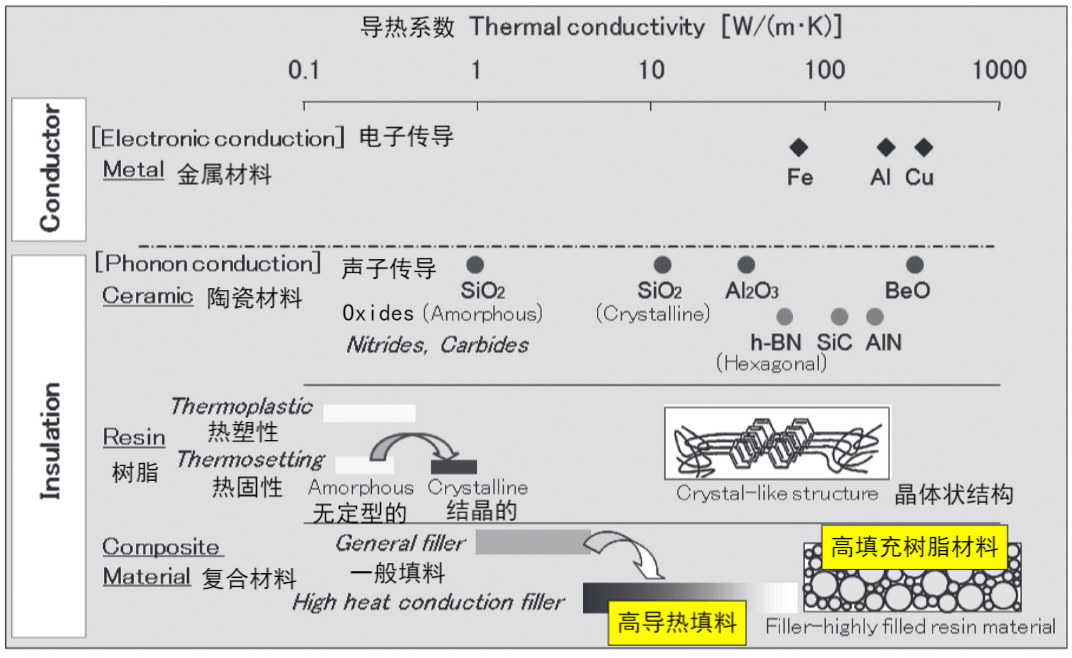
Development Trend of High Thermal Conductivity Materials
Although metal particles and carbon-based materials have high intrinsic thermal conductivity and are widely used, such fillers not only change the thermal conductivity but also change the electrical insulation properties of the polymer, such as leading to extremely high electrical conductivity of the polymer, high dielectric constant, so this type of material is not suitable for occasions that require high insulation performance. Therefore, the insulation field is paying more attention to inorganic particles with extremely high intrinsic thermal conductivity and good insulation properties. At present, inorganic particles including aluminum oxide, magnesium oxide, aluminum nitride, boron nitride and other inorganic particles have been widely used in high thermal conductivity polymer-based composite materials.
Boron nitride thermal paste (for 3D printing industry)
h-BN characteristics
Usually, the crystal structure of hexagonal boron nitride (h-BN) is the same layered structure as graphite, and its particle shape is scaly (related reading: White graphite hexagonal boron nitride has a similar structure to graphite, why h-BN is not conduct electricity?), has excellent thermal conductivity (in-plane thermal conductivity experimental value 220–420W/mK, theoretical value up to 550W/mK), has excellent electrical characteristics (low dielectric constant - about 4.0 in a wide frequency range , low dielectric loss tangent 3 × 10–4, good insulation - band gap width 5.2-5.8eV), is considered to be the most ideal insulating and thermally conductive filler so far.
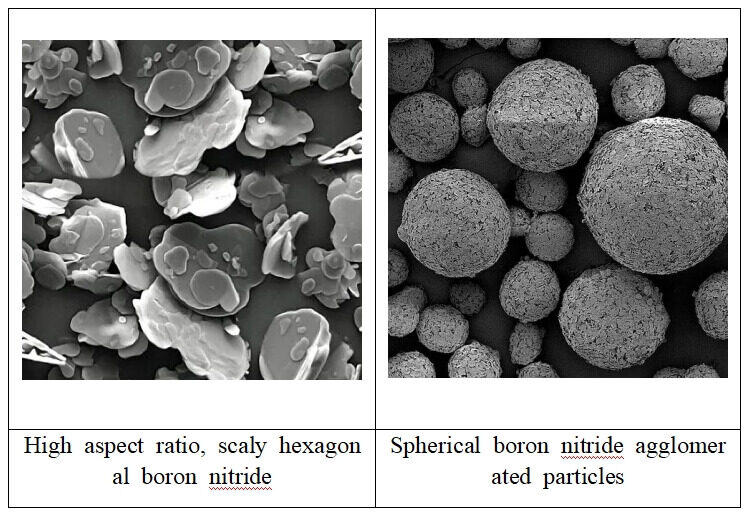
From: SPAETER Group
Advantages of spherical boron nitride agglomerated particles: high filling and isotropy
However, if we want to obtain polymer-based thermal conductive materials with high thermal conductivity, it is not enough to just look at the intrinsic thermal conductivity of the filler. We also need to pay attention to its process. In the preparation process of polymer matrix composite materials, adding a very small amount of flaky boron nitride will cause the viscosity of the system to increase sharply. It is very difficult to add a volume content higher than 20%, and spherical boron nitride Agglomerated particles can reduce the impact of filler addition on the viscosity of the polymer composite system.
In addition, scaly hexagonal boron nitride has anisotropic thermal conductivity characteristics, with high thermal conductivity in the in-plane direction (220–420W/mK), but low thermal conductivity in the thickness direction (2-40W/mK). In addition, If scaly particles are filled into resin to form a sheet, the h-BN particles in the filled resin tend to orient in the plane direction of the sheet, and the thermal conductivity in the thickness direction of the resin sheet cannot be effectively improved.
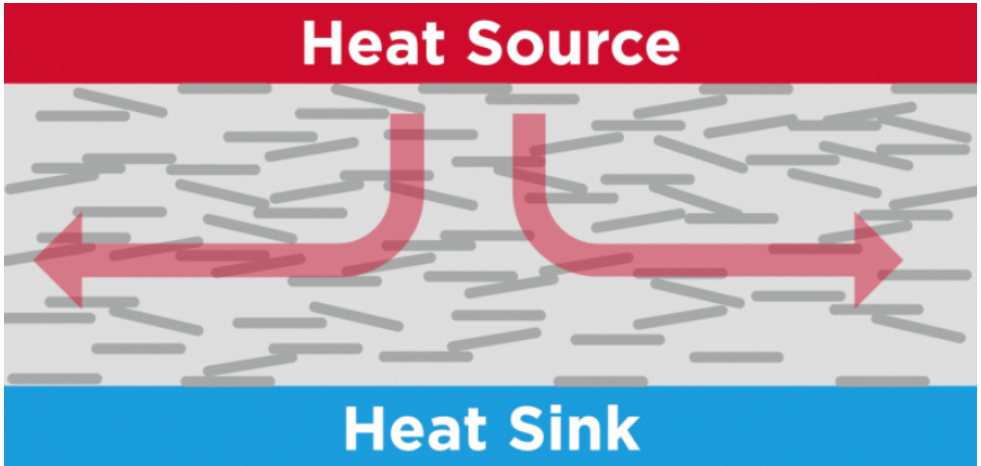
Schematic diagram of heat conduction direction (reference source: Saint-Gobain)
In order to improve the thermal conductivity anisotropy of scaly BN particles, h-BN particles are granulated by spray drying or the like (spherical boron nitride agglomerated particles can be produced), h-BN is sintered, and the sintered body is pulverized. BN particles and other methods are used to keep the scaly BN particles randomly oriented, so that the material has isotropic thermal conductivity.
Of course, although spherical boron nitride is very good at improving the thermal conductivity of polymers, the actual application is to "mix and match multiple fillers" to more significantly improve the thermal conductivity and heat dissipation capabilities of polymers, such as alumina with spherical boron nitride, flake Boron nitride is matched with spherical boron nitride, large particle spherical boron nitride is matched with small particle spherical boron nitride~
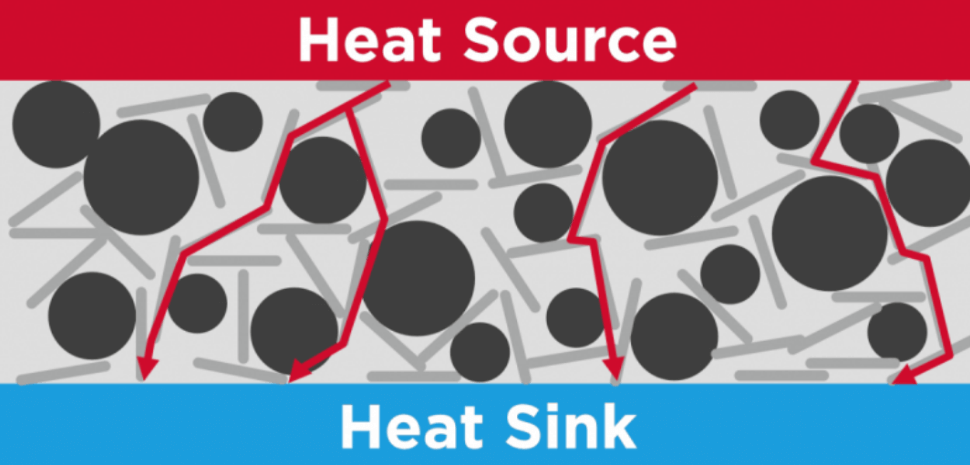
Combination of flaky and spherical boron nitride particles significantly improves polymer thermal conductivity
In addition to its excellent insulation and thermal conductivity, other characteristics of hexagonal boron nitride are also worthy of our attention. Let’s take a look below.
01 Low dielectric constant
Boron nitride maintains a constant loss factor over a wide frequency and temperature range, which helps achieve high-frequency data transmission. Adding boron nitride as a filler to high-frequency resin materials can prepare high-frequency materials that meet the needs of high-frequency data transmission. Thermal conductive polymer.
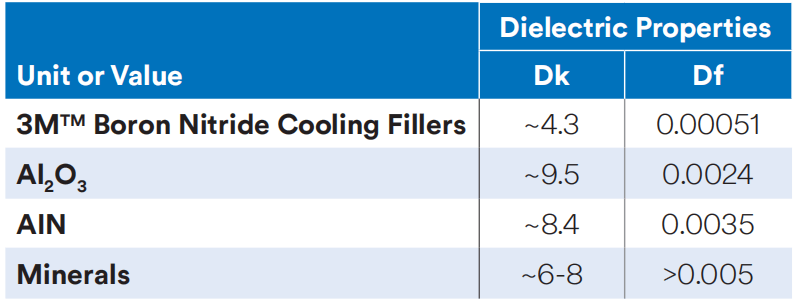
Typical electrical properties of several thermally conductive fillers (reference source 3M)
02 Low density
Boron nitride has a lower density and, for equivalent thermal conductivity levels, the weight percent of boron nitride is much lower compared to mineral or oxide-based fillers. For example, an Al2O3-PA66 compound (2.3 kg/L) and a BN-PA66 compound (1.4 kg/L) are 1.6 times heavier than the latter. Lower density boron nitride fillers can effectively reduce part weight.
03 Low hardness, lubrication
hBN has low Mohs hardness and has a flake shape similar to graphite. It is known as white graphite. It is smooth and frictionless, which can greatly reduce the wear and tear on injection molding and extrusion equipment and effectively extend the service life of the equipment.
However, when using agglomerated boron nitride, different processing conditions will have a great impact on the morphology of agglomerated boron nitride, which in turn affects the thermal conductivity of the final interface material. If there is too high shear force during the resin mixing process, part of the agglomerated spherical structure may be broken; even for the same formula, different mixing speeds and mixing times will lead to different thermal conductivity differences. Without an understanding of the impact of processing conditions on boron nitride morphology, users struggle to obtain composites with optimal thermal and rheological properties.
The bonding force of condensed spherical BN prepared under general process conditions is very weak, and the spherical structure is easily destroyed during the mixing process of polymer composite materials. Therefore, how to prepare stable and "torture-resistant" spherical BN is also a topic worthy of discussion. (Friends are welcome to contribute and share~).
Product page:https://www.ceramic-solutions.com/Boron-Nitride.html
Contact page:https://www.ceramic-solutions.com/Contact.html